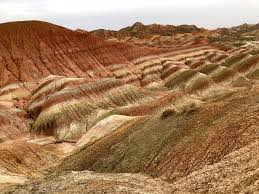
Geomorphology is the scientific study of landforms and the processes that shape the Earth’s surface. This module provides a comprehensive introduction to the origins, evolution, and classification of landforms, emphasizing both endogenic (internal) and exogenic (external) forces such as tectonics, weathering, erosion, transportation, and deposition. Students will explore the interaction between climate, geology, and biological factors in landscape development through lectures, practical exercises, and fieldwork. By analyzing landform dynamics in diverse environments—ranging from mountains and rivers to deserts and coastlines—students will develop skills in observation, mapping, and interpretation of geomorphological evidence. The course prepares students to assess natural hazards, environmental change, and land management issues, fostering a holistic understanding of Earth’s dynamic surface processes
- Teacher: Dorcas ABAYISENGA
- Teacher: Dr. James OWINO
What should be studied as the foundations of chemistry?
Atomic Structure: Understanding the composition of atoms. Periodic Table: Elements ON PTE based on atomic number, electron configuration, and chemical properties. Chemical Bonding: Ionic, covalent, and metallic bonds, as well as intermolecular forces. Chemical Reactions: Physical and chemical changes, reaction types, balancing chemical equations, INCLUDING REDOX REACTIONS, and energy changes. (a) Endothermic reactions (b) Exothermic reactions. Stoichiometry: The calculation of reactants and products in chemical reactions, involving mole concepts and molecular weights. States of Matter: The physical forms of substances—solid, liquid, and gas—and their properties, including phase changes. Students will be equipped with these foundations to sharpen their understanding of principles of chemistry.
- Teacher: ETIENNE TWIZEYIMANA
- Teacher: FABIEN NKURIKIYIMANA
